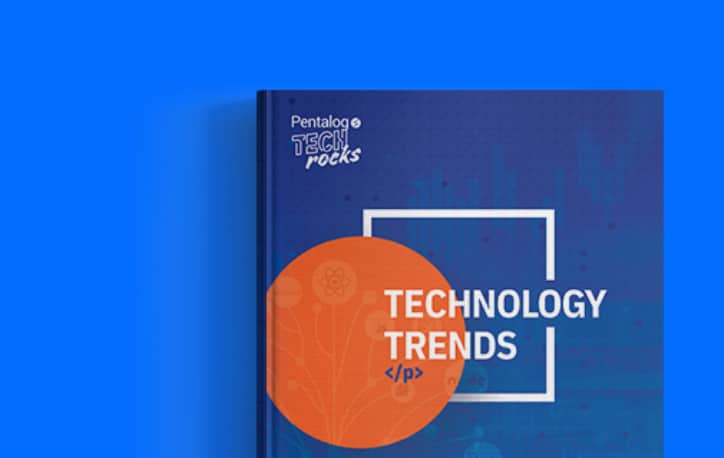Data leaders don’t buy technology for the sake of technology. They buy it to answer hard questions, like: Can we trust this record? Can we connect the dots across systems? Can we explain the results to regulators, auditors, or even our own business teams?
Both TAMR and Data Ladder are set out to answer those questions, but they take very different paths.
TAMR leans on machine learning to automate entity resolution across massive datasets.
Data Ladder, with its flagship platform DataMatch Enterprise (DME), emphasizes transparency and control. It gives teams the ability to profile, cleanse, and match data with explainable logic that they can also audit and adjust.
This guide breaks down where each platform excels and where trade-offs appear, so if you’re exploring Data Ladder as a TAMR alternative (or TAMR replacements in general), you’ll know when and where it can be the better fit for your environment.
Data Ladder vs. TAMR: Core Product Philosophy
TAMR: Machine Learning–Driven Entity Resolution
TAMR positions itself as a large-scale data mastering and entity resolution solution. Its core value lies in using machine learning models to group, cluster, and link records across massive datasets.
However, it also builds in a human-in-the-loop feedback cycle, where user validation helps retrain models and improve accuracy over time.
This combination makes TAMR especially appealing for organizations with extremely large, complex, or diverse data sources: think financial services, telecommunications, or global enterprises with billions of records.
TAMR is also cloud-first by design, though hybrid deployments are possible.
While TAMR includes additional data quality features, their capabilities may be limited, as many users rely on complementary tools for more advanced parsing, transformations, or upstream data preparations.
For teams looking for an end-to-end solution or wanting full control over every cleansing and parsing rule, this may require integration with other specialized solutions.
Strengths:
- Automated ML-driven classification and clustering
- Continuous learning from feedback
- Strong fit for very large-scale use cases
- Established enterprise presence in financial services, healthcare, and manufacturing
- Cloud-native with support for hybrid deployment
Limitations:
- Limited visibility into how matches are decided; rules and thresholds aren’t user-defined
- ML models require labeled training data and internal expertise
- Requires high-quality input data, but advanced cleansing and parsing is often required to be handled outside TAMR
- Licensing can be enterprise-scale (and costly), often beyond what mid-market teams want
In short, TAMR is built for scale and automation, but it often functions as a “black box,” providing limited transparency in how matches are made and requiring teams to trust its ML-driven outcomes.
Data Ladder: Transparent & Configurable Data Matching
Data Ladder approaches the same challenge from the other side. With DataMatch Enterprise (DME), the emphasis is on user control, transparency, and end-to-end data quality. Instead of relying on machine learning, DME blends deterministic and probabilistic algorithms with rule-based controls that teams can tune, test, and audit.
While DME is primarily a data matching tool, it provides a broad data quality toolkit, including profiling, cleansing, standardization, deduplication, and even address verification, built on a rule-first, user-configurable approach.
It also offers merge-purge and survivorship workflows to help create golden records, while clerical review options keep business users in control of decisions.
Deployment of DME is flexible (on-premises, in the cloud, or hybrid), which is especially valuable for regulated industries like banking, healthcare, and government.
And unlike platforms that require deep data science expertise, DME is designed for accessibility: data operations teams and business analysts can configure, test, and run projects without waiting on engineering.
Strengths:
- Integrated profiling, cleansing, parsing, and standardization before matching
- Transparent, explainable match logic with clerical review options
- Configurable logic: users can define, test, and tune match rules
- Merge-purge and survivorship capabilities for creating golden records
- Address verification feature (for US and Canada, as an add-on)
- Flexible deployments: on-prem, cloud, or hybrid
- Visual, business-user–friendly UI with API support for integration and automation
- Fixed-cost licensing (no pay-per-record pricing)
Limitations:
- Doesn’t aim to be a full master data management (MDM) suite
- Doesn’t rely on ML by default; users tune rules manually
For teams that value precision, auditability, and cost predictability, Data Ladder provides a more controlled and accessible TAMR alternative.
Control Over Matching Logic
| Question | TAMR | Data Ladder |
| Can users explain why a match occurred? | Partially (via ML model explainability tools) | Yes – every rule and weight is visible and tunable |
| Can matching logic be adjusted without ML retraining? | Generally not (usually requires retraining or model reconfiguration) | Yes |
| Can analysts control threshold tuning? | No, requires data science support | Yes, with visual UI |
If you’re in a highly regulated industry (finance, healthcare, public sector), where explainability and traceability are mandatory, Data Ladder offers a safer path to production.
Matching Outcomes: Automation vs. Precision
TAMR is built for mass-scale entity resolution, often across messy, unlabeled records. It automates match logic using ML models, which can find non-obvious connections between records. But this comes at the cost of transparency and fine-grained control.
Data Ladder, by contrast, allows users to:
- Define exact match thresholds
- Weight fields by importance (e.g., name > address > phone)
- Customize transformations and standardization rules
- See confidence scores and match decisions in context
If your goal is precise data matching, deduplication, and record consolidation, Data Ladder will give you faster iteration cycles and greater visibility into match decisions.
Deployment & Integration Reality
TAMR works best when paired with an advanced data architecture and engineering support.
Though it integrates well with cloud platforms (AWS, GCP) and data lakes, setup can be intensive.
Data Ladder is far more flexible:
- Supports on-prem, cloud, hybrid, and desktop deployments
- Integrates with over 150 data sources: SQL Server, Snowflake, Salesforce, Excel, Oracle, etc.
- Offers user-configurable (low-code/no-code) interface + REST APIs for integration
These make Data Ladder a top TAMR alternative for:
- Teams without large data engineering functions
- Hybrid environments where some systems are still legacy
- Fast deployments with minimal DevOps efforts
Who Uses TAMR vs. Data Ladder – and for What?
TAMR Use Cases
- Vendor master consolidation across global operations
- Entity resolution at large scale
- ML-driven matching across noisy, unlabeled datasets
- Architected for cloud-first data teams
Data Ladder Use Cases
- Accurate data matching and deduplication across sources
- Large-scale entity resolutions across structured datasets
- CRM/ERP data cleansing, matching and standardization
- Data quality prep for analytics, MDM, and reporting
- Match rule explainability for audit compliance
- Address verification and postal validation (CASS/USPS and Canadian address support is provided as an add-on to improve match rates and deliverability)
If your users are saying:
“We need to know why a match happened, and fix the logic fast,”
then TAMR’s limited transparency vs. rule-based approaches might be limiting. Data Ladder lets you make the fix in minutes.
Real-World Tradeoffs to Consider
| Decision Factor | TAMR | Data Ladder |
| Speed to value | Slower (due to training/setup) | Faster (plug-and-play, UI-driven) |
| Governance | Limited visibility into match logic | Full traceability and auditability |
| Technical dependency | Requires ML/engineering support | Business-friendly, no-code optional |
| Match flexibility | Harder to tune without model retraining | Easy rule-based tuning |
| Scalability | Extremely high at enterprise scale | Scales well for all structured datasets |
Should You Consider Data Ladder as a TAMR Alternative?
You should consider Data Ladder as a TAMR alternative if:
- You need full control over how records are matched, scored, and merged
- Your team needs to explain and audit matching outcomes
- You want to integrate quickly with on-prem or hybrid systems
- You’re doing CRM, ERP, or MDM prep work, not just raw lake deduplication
- You prefer tools that are usable by analysts and data ops, not just engineers
Final Word
TAMR is powerful, but it’s built for enterprises with deep data science maturity and ML ops infrastructure. If your priorities are fast deployment, transparency, and hands-on control, then Data Ladder presents a more agile and accessible solution.
Matching is not just about scale; it’s about trust.
Data Ladder gives you both: confidence in your data, and clarity in how it got there. It is one of the best TAMR alternatives for data matching and entity resolution.
Want to give it a try?
Download a free Data Ladder trial today or book a personalized demo with an expert.




































